There are more interesting articles, commentaries and analyst reports on the Web every week than anyone could read in a month.
Each Saturday morning I like to share some of the ones I’ve read during the week.
The weekend will be over before you know it, so enjoy some weekend reading…and please forward to your friends by clicking the social link buttons.
Should you buy in a booming market?
Like with most things in life – timing is a big part of the property investment game.
So when it comes to a booming market – should you be buying a property?
This article from Domain.com.au looks at all the options to consider, for each of the different buyers.
Leaving aside the question of how to buy into a booming market, many people question whether it is a wise decision to buy into a property boom at all.
As always, there is no one-size-fits-all answer, as whether you should or should not buy will depend almost entirely on your circumstances.
Let’s take a look at four common types of property buyers and the considerations unique to each of them in deciding whether to buy during a property boom:
The first homebuyer
First homebuyers tend to be the most price-conscious, because they often don’t have any equity to use for a property purchase and are usually reliant on deposit savings.
According to Ray Ellis, CEO of the First National Real Estate franchise, it comes down to buying when you can afford to.
“Many a first homebuyer has delayed their purchase in the hope that the market is about to adjust downwards.
Unfortunately, the reverse seems frequently the case and delaying a purchase on a rising market [often] only costs more in the long run,” Ellis says.
“Property investment is for the long-term, so the important thing is to save hard for a larger deposit and avoid mortgage insurance, if possible.
Then, aim to buy a property in a good position where you can add value over time.”
A sea-change or a tree-change?
According to the ABS, most people move to another property in their local area.
However, many people look to escape the hustle and bustle of urban areas for life in quieter surrounds by the beach, among the trees or on a farm.
Making a successful sea-change or tree-change will depend on how familiar you are with that new market, as well as the state of the market in which you are selling.
“Strong selling conditions [in some cities, such as Sydney and Melbourne] mean it’s the perfect time to sell for those considering a lifestyle change.
Usually, prices are lower in regional areas, so selling in the city and moving to the country right now means your purchasing power will be maximised,” Ellis says.
Greg Shilson-Hughes, who recently moved from Sydney’s Inner West to the Blue Mountains, agrees: “It was all part of our big plan to escape to the country.
I just love the bush; I like looking out my window and seeing something other than a fence,” says Shilson-Hughes.
“The way we looked at it, we can get a bigger and better property with more privacy, and be near mortgage free, which would also improve our lifestyle, just to trade off with a bit more of a commute to work.
But due to the nature of my work, I can make the train trip a productive part of my day, so we decided to take the money and buy a property almost outright that gives us a better lifestyle.”
The downsizer
It is arguably the downsizer who is best placed to buy their next home in a booming market.
Like an upgrader, they tend to be selling at the same time.
However, the downsizer’s home tends to be worth more than the one they are buying.
“Strong demand means an almost certainly smooth sale and maximisation of your sale price.
With boom-like conditions helping to assure a strong result, retirees are more likely to be in a position to put some money in the bank and buy a less expensive retirement property,” Ellis says.
It can be tricky though, if you plan on downsizing into a retirement village, since retirement living is often more a lifestyle choice than a financial decision.
The investor
Regardless of what state the market is in, every property investor needs to ensure the sums stack up before taking the plunge.
In a rapidly rising market, that means keeping a level head and not getting swept up in the auction fever.
“Now is the perfect time to re-finance at historic low rates and lock in for the long term.
With Australia’s population growth among the highest in the OECD, demand will continue to be strong for rental properties near transport hubs and employment centres,” Ellis suggests.
First time investor Gleidson Moreira initially scouted for property in booming Sydney before shifting his attention to Brisbane.
“It was difficult [in Sydney], because all the properties would get snapped up very quickly.
If the open home was on Saturday, more often than not it will sell that day.
You have to be ready to make an offer and to offer above asking price to have a chance even to be considered,” he explains.
Read the full article here
The latest squeeze
It looks like there’s more bad news for lending finance.
This Blog by Pete Wargent shows the statistics behind the results.
Healthy investment
Total lending finance suffered its sharpest contraction in 9 months in September 2017, declining by 5.3 per cent to $67.9 billion in seasonally adjusted terms.
A key driver of the result was the squeeze on investment mortgages, although in trend terms there has been solid offsetting growth in the larger owner-occupier sector, to the extent that housing finance remains only just off record highs, at least for now.
The trend in personal finance commitments has been creeping higher again over the past few months, albeit only from the levels seen nearly a decade-and-a-half ago, while the average credit card balance has also bounced a little of decade-lows.
Read the full article here
Australia’s housing slowdown is another reason the RBA should leave interest rates on hold’
It’s no secret that Australia’s property market has slowed down – particularly in Sydney.
So what does this really mean for the market?
An article on Business Insider explores why this is a reason to keep interest rates on hold.
Australia’s housing market is slowing, led by its largest city, Sydney.
Price growth is stalling and auction clearance rates are back at levels not seen in close to two years, coinciding with a noticeable lift in property listings and a slowdown in investor housing finance.
After years of strong price growth, particularly in Australia’s southeastern capitals, it looks like we’re in the early stages of regulator-driven national housing slowdown, led by Sydney.
Presuming the early indicators are right, the only question now is how severe the slowdown will be, and what will it do to the Australian economy in the years ahead?
To George Tharenou and Carlos Cacho, economists at UBS, while it’s unlikely to herald the start of a hard-landing for Australia’s once high-flying housing market, it will buffet
economic growth, likely ensuring Australia will continue to lag the recovery in the broader global economy.
“In the last couple of years, the Australian economy has been supported by an improving global backdrop.
This has led to a rebound in commodity prices, nominal GDP, and a rise in surveyed business conditions and employment growth to the strongest levels since the GFC,” the pair say.
“Nonetheless, the economy now faces a new domestic headwind from the end of a record housing boom.”
In particular, Tharenou and Cacho say that macroprudential tightening on investor and interest-only lending from Australia’s banking
regulator, APRA, along with a sharp increase in new housing stock as a result of Australia’s residential construction boom, will see annual house price growth stall in the period ahead, creating renewed downside risks on the outlook for household spending.
“Our view of soft wages, combined with a fading household wealth effect, means that consumption stays subdued ahead, and probably even slows somewhat from 2.5% year-on-year now to 225% in 2018 and 2019,” they say.
“That would be a weaker scenario than most expect, especially the RBA.”
Household consumption is the largest part of the Australian economy at a shade under 60% of GDP.
Read the full article here
The Melbourne property market outlook
It’s still the most livable city in the world.
But what’s really going on in the Melbourne property market?
In this article for Switzer, John McGrath looks at current state of the market.
In our recently released McGrath Report 2018, we discuss Melbourne’s rising appeal as both an investment hot spot and attractive alternative for Sydney owner occupiers (last week we examined the Sydney property market) who are now priced out of their home market following a phenomenal five-year boom.
Comparatively affordable property, a strong state economy, top schools and world-renowned liveability are all factors contributing to Melbourne’s record population growth.
And there is still room for future property price growth despite exceptional capital gains over the boom.
Taking a two-decade view, Melbourne’s annual compound growth rate for house prices is 8.4%, a whisker ahead of Sydney on 8.2%.
Yet Melbourne is far more affordable than Sydney today, with the median house price more than $200,000 cheaper, according to CoreLogic figures.
In the 12 months to June 2017, Melbourne house prices rose by a solid 9.8% to a median $675,000 and apartment prices rose by 2.0% to $500,000.
Outstanding value for money is helping Victoria remain the fastest growing residential population in Australia, with record numbers of new interstate and overseas residents choosing Melbourne as their home and more investors seeing better potential here.
Investors are favouring Melbourne for its lower price base, growing population and buoyant economic landscape, with a state budget surplus of $1.2 billion forecast for FY2018 and $22 billion flagged for infrastructure spending.
Families are also attracted by Melbourne’s affordability as well as its job prospects, high quality schools and lifestyle.
Job numbers in Melbourne grew by 94,100 in the year to July 2017 – more than anywhere else in Australia; and the city has been ranked the world’s most liveable for the seventh consecutive year.
Schools are a big factor in Melbourne’s population and property price growth.
Top public education campuses, including two in the Top 100 World University Rankings, helped attract 65,007 migrants in FY16 alone.
Many Melburnian families are willing to upsize or even downsize their homes in order to enter top secondary school catchment zones in suburbs like Balwyn, Mount Waverley and McKinnon.
Stock in these suburbs is already squeezed by a trend in empty nesters and retirees opting to stay put in family homes, resulting in fierce competition for limited listings, ongoing price rises and often price ripples to adjacent suburbs.
For example, median house prices in Bulleen rose 13.9% in FY17 as neighbouring Balwyn North became too expensive.
Buyers are also finding better value in Cheltenham over next door neighbour Black Rock.
Stamp duty exemptions for first home purchases up to $600,000 and concessions up to $750,000 are encouraging first home buyers back into the market.
Hot spots include Hoppers Crossing and Werribee in the west, Craigieburn in the north and Pakenham and Clyde in the outer south east.
Young buyers on the city fringe will be encouraged by 17 new suburbs offering 100,000 rezoned lots to be released by the end of 2018.
Demand for Melbourne’s trophy homes is red hot.
The city’s record house price reached $40 million in August 2017 when the Toorak home of Mirvac director, Marina Darling sold to a Chinese buyer, smashing the previous record of $26.25 million set in December 2016.
Read the full article here
Here Is What Happens To ‘Cool Kids’ After High School
Have you ever wondered what happened to those ‘cool’ kids once they entered the real world?
According to an article on spring.org.uk studied show that their adult life turned out very different.
Cool kids do everything to be popular in high school, but what happens to them after that?
Teenagers who try to ‘act cool’ in early adolescence grow up to experience a range of problems in early adulthood, research finds.
‘Cool kids’ tend to do things like hang out with more attractive people, become romantically involved at an early age and engage in delinquent activity (smoking, drinking and petty crimes).
However, by the age of 22, these ‘cool kids’ are rated as less socially competent than their peers.
They were also more likely to have substance abuse problems and to be engaged in criminal activities.
The conclusions come from a study of 183 teens who were followed from the age of 13 through to the age of 23.
They all attended public schools and were from ethnically and racially diverse backgrounds.
Professor Joseph P. Allen, the study’s first author, said:
“It appears that while so-called ‘cool’ teens’ behavior might have been linked to early popularity, over time, these teens needed more and more extreme behaviors to try to appear cool, at least to a subgroup of other teens.
So they became involved in more serious criminal behavior and alcohol and drug use as adolescence progressed.
These previously cool teens appeared less competent – socially and otherwise – than their less-cool peers by the time they reached young adulthood.”
Read the full article here
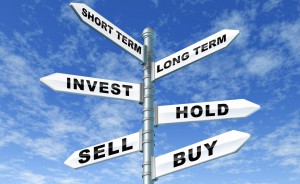





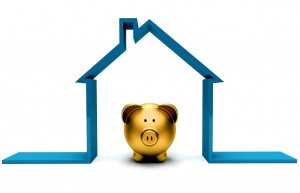
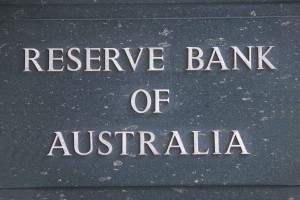


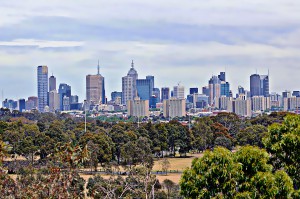

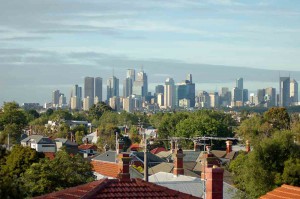


No comments:
Post a Comment